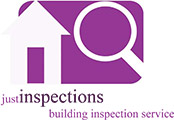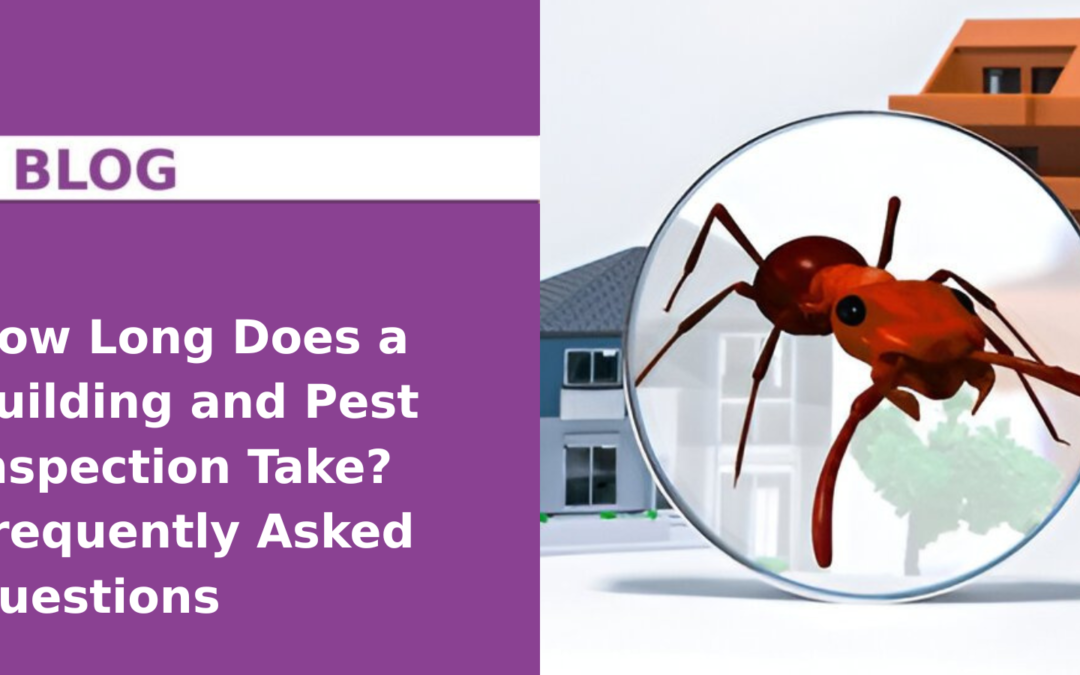Isn’t the thought of moving to a new house in Australia so compelling? But how can you be certain that what you see is actually what you get? A full building and pest inspection gives information on the state of your potential new house, exposing any concealed pest infestations or structural problems, but “how long does a building and pest inspection take?” Anyone with a hectic schedule who has to efficiently manage their time is naturally concerned about this. We are here to help you understand the average duration and the several elements that can affect it by offering you a complete overview in the form of frequently asked questions.
How Long Does a Building and Pest Inspection Usually Take?
An average three-bedroom home requires 2 to 2.5 hours for a building and pest inspection. Homes with four or more bedrooms or those that are defined as heritage may take 3 hours or longer to complete, while smaller properties, such as townhouses or apartments, may finish in 1 to 1.5 hours. This timeline, though, is not set. The following variables affect how long an inspection takes:
Property Size and Design
It takes longer to inspect larger homes, homes with complex designs, and homes with many rooms, bathrooms, and outhouses. Complex designs and floor layouts make the job more demanding for the inspector, requiring more time to visually inspect and check for compliance with Australian standards.
Condition and Age of the Building
Inspections of older or neglected homes are typically more thorough to identify structural problems, safety hazards, and insect infestations. As there are fewer visible issues, new or well-maintained homes may not require detailed inspections.
Accessibility of All Areas
The roof space, subfloor, interior, and exterior are all inspected. Access restrictions, such as locked or overcrowded locations, could delay or limit inspection of the affected regions. Access must be safe, as specified by Australian Standard AS4349.1-2007.
Pest Risk
The inspector will take longer to inspect the severity of issues, such as active termites, structural damage, or a pest infestation. They may need to use special tools to collect evidence and document the issues in the report.
What’s Included in a Building and Pest Inspection?
A standard building and pest inspection will try to give the property’s condition an overall rundown. Typically, this may involve the inspection of:
- The interior of the building is inspected, such as ceilings, walls, floors, windows, doors and frames, kitchens, bathrooms, laundries, and stairs.
- The exterior features walls, doors, windows, garages, gutters, eaves, weep holes, and ventilation are inspected.
- The roof space and exterior include the inspection of the roof structure, coverings, and any defects such as leaks.
- Structural stability of the subfloor and pest activity.
- Garages, sheds, and other outbuildings are inspected at a reasonable distance from the main house.
- The general site conditions involve the inspection of fences, walks, drives, and non-structural retaining walls.
- It identifies any major defects that might impact the stability of the building.
- Safety hazard inspection involves recording any conditions that might be hazardous to occupants.
- It includes searching for termites, wood borers, and any signs of damage they might have left.
However, what is typically not included in a regular inspection is:
- Small cosmetic issues like chipped paint or worn-out carpet.
- Appliances such as air conditioners, dishwashers, and ovens.
- Electrical and plumbing installations (more than a quick visual check).
- An estimate of the cost of any necessary repairs.
How to Prepare for a Building and Pest Inspection
There are several steps you can take to make the process less time-consuming, whether you are a buyer preparing for an inspection on a home you are interested in or a seller scheduling a pre-sale inspection.
- Provide Access: Open all doors, cupboards, and access points to the subfloor and roof space. Remove anything that would make it difficult for the inspector to access every part of the property.
- Provide Documentation: Allow sellers to access pest treatment logs, remodelling permits, and warranty information. Transparency accelerates the process.
- Fix Minor Repairs: Overgrown plants and stacked firewood against walls may conceal termites. Trim the grass and clear any debris from the perimeter. Fix leaky faucets, broken windows, or loose tiles to avoid warning signs.
- Pest Inspection Preparation: Clean up the premises, paying specific attention to kitchens and bathrooms, which are pest magnets. Remove any clutter or possible food sources. There should be no dirt or leaves blocking the weep holes along the foundation of the property.
- Inform Residents and Protect Pets: Make sure that residents understand that they should not interfere with the inspection. Dogs and cats should be kept indoors to avoid distractions or safety hazards during the inspection.
- Attend the Inspection (Buyers): Being present enables you to ask questions and see issues firsthand. Take a notepad and wear comfy shoes. Make a list of any specific questions or concerns you have about the property prior to the inspection. Feel free to inform the inspector of any special locations you would like them to keep an eye on.
When Will I Receive My Building and Pest Report?
A large number of reputable building and pest inspection companies give inspection reports as quickly as feasible since the real estate transactions are sometimes to be carried out urgently. You should receive your written report within 24 to 48 hours after the inspection is completed. Digital reports are common and can be viewed directly via portals or email. The inspection business usually notifies the client of this. There may be delays if:
- The property has problems that need more research.
- Samples of mould or termites require laboratory testing.
- The inspector is gathering thorough photographic proof.
What Makes a Thorough Inspection?
When it comes to “how long does building and pest inspection take,” the primary indicators of full inspection include:
- The inspector thoroughly examines every part of the property that is accessible for inspection.
- They use modern tools and technology, such as moisture metres and thermal imaging cameras.
- They meet the relevant Australian Standards for building and termite inspections, specifically AS 4349.1 and AS 4349.3.
- They provide a complete inspection report that specifically summarises their findings, supported by photographic proof if needed.
- The professional inspector will gladly answer any questions you may have, both before and after the inspection.
How to Choose the Right Inspector for an Assessment
Consider the following factors when you want to select a qualified and reputable building and pest inspection service:
- Insurance and Licencing: Verify the insurance (including professional indemnity) and licence of the inspector.
- Experience and Local Expertise: Select inspectors with considerable industry experience and familiar knowledge of local building and pest issues.
- Reviews and Referrals: Check online reviews and seek recommendations from trusted sources like your conveyancer (lawyer, solicitor, attorney, or legal expert), friends, or family.
- Sample Reports: Evaluate sample reports for clarity and comprehensiveness.
- Autonomy: Don’t rely just on recommendations from real estate agents; use an independent inspector for a neutral evaluation.
Frequently Asked Questions: Your Top Questions Answered
Q: Can I attend the inspection?
Indeed. Benefits of attending the inspection include early findings, immediate answers, and firsthand observation. In the last half hour, the majority of inspectors urged client participation.
Q: Who pays for the inspection?
The buyer usually pays the cost of inspection. A pre-listing inspection, however, might be chosen by sellers to increase buyer confidence.
Q: How often should the inspections be carried out?
Annual pest inspections are an effective strategy for homeowners. Although they are one-time, pre-purchase inspections are important for purchasers.
Q: Are inspections mandatory?
No, but neglecting them could lead to expensive surprises. As part of due diligence, the majority of mortgage lenders advise inspections.
Q: Why does timing matter in property transactions?
If your offer is conditionally approved, you can schedule inspections as soon as possible and avoid the delay by booking in advance or selecting local building inspectors.
Final Thought | Building and Pest Inspection: Essential or Optional?
Real estate purchases are huge, aren’t they? What if those recently painted walls concealed hidden issues? A building and pest inspection might help with that; consider it the health check of your property. This blog covers the answer to a reasonable question of yours, “How long does a building and pest inspection take?” Homeowners can contact the professional inspectors at Just Inspections today to schedule a building and pest inspection so that you don’t miss a step in your property inspections by providing detailed evaluations in as little as 24 hours.

